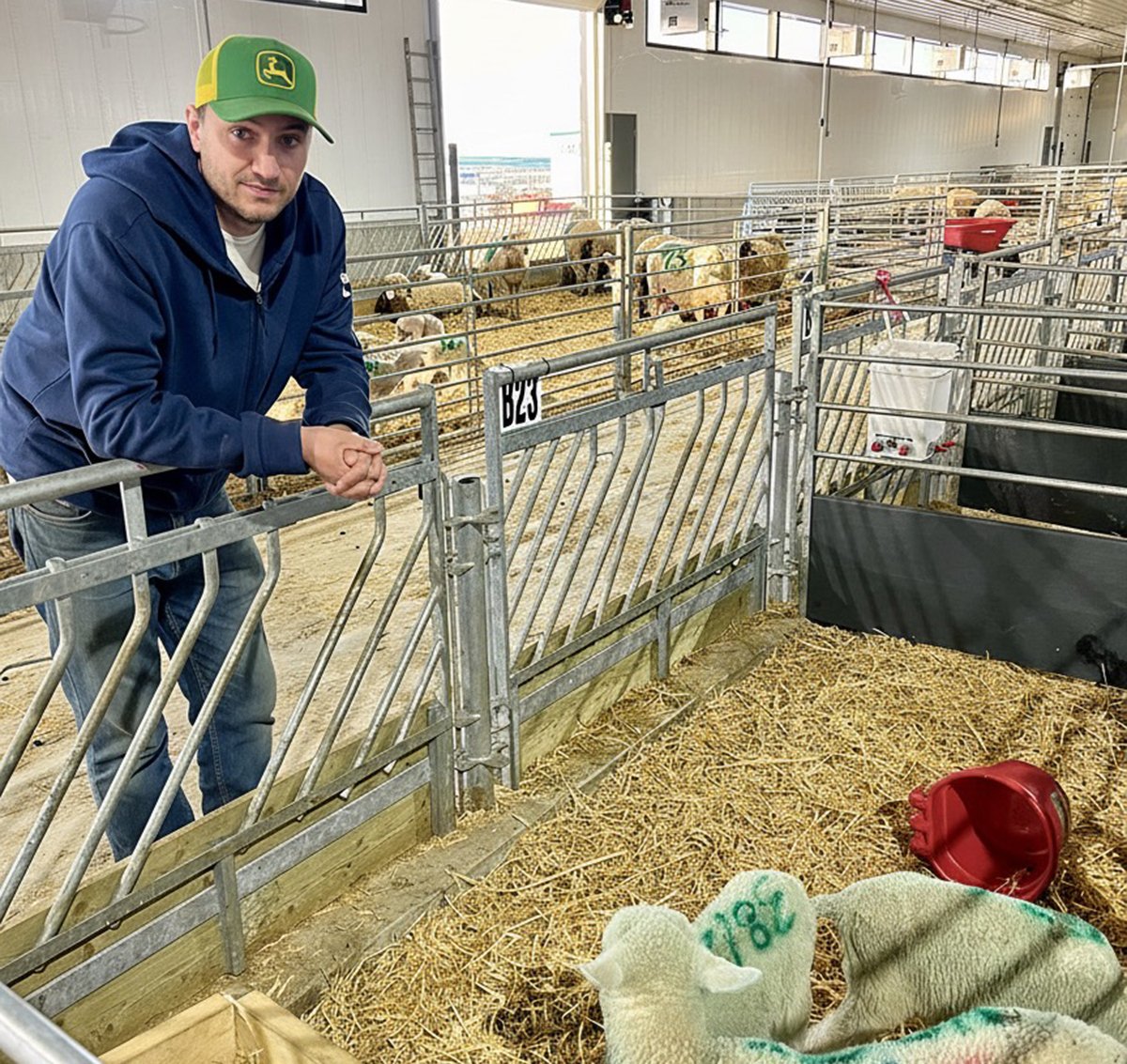What sounds simple and efficient to a scientist can sound difficult and costly to a farmer.
That’s why some of the cutting edge research discussed at the Western Nutrition Conference in Winnipeg isn’t likely to be quickly applied by producers.
“This is all pretty futuristic for us right now,” Dan Klippenstein, a hog producer from Niverville, Man., said during the conference. “It’s expensive on the equipment side.”
Klippenstein is responsible for his pork production company’s animal nutrition program, so he found much of what the international researchers had to say fascinating and potentially useful.
Read Also

Solar, sheep provide valuable farm diversification
Eric Steeves says raising sheep on forages grown under solar panels provided economic stability and perhaps even saved his family’s fifth generation southern Alberta grain farm.
However, applying many of the methods would be difficult and costly in the real world of commercial hog production, especially in economic tough times.
“It’s hard to justify right now,” Klippenstein said about dual- and multiphase feeding of sows, a subject many researchers discussed.
Sung Woo Kim of North Carolina State University said biological studies of gestating and lactating sows shows they have radically different nutritional needs at different stages of pregnancy and at different stages in life. That means they need to be fed differently and not with a one-size-fits-all sow diet.
“In order to apply ideal protein in feeding sows, a parity-split feeding is suggested for lactating sows and a phase feeding is suggested for gestating sows,” Kim said in the paper he presented.
Phase feeding requires more elaborate sow feeding systems than most producers have, which makes adoption difficult, said researcher Ryan Samuel of the University of Alberta after Kim’s presentation.
“It’s still coming up against the brick wall of “no, no, no we don’t want to do that. It’ll cost too much,’ ” said Samuel, who works with feed amino acid expert Ron Ball.
However, he thinks producers will eventually be talked into phase feeding as scientists compile more data that proves the more expensive system will save money.
“How long did it take people to accept that phase feeding would work for grow-finish animals,” Samuel said.
“People were uncomfortable in going to phase feeding, but now it’s the universal standard. It’s just what you do.”
The sow’s changing needs are affected by the sudden increase in the growth rate of the fetuses, which causes nutrients to be stripped from the sow’s body to feed them.
Despite sows’ needs changing, in most systems the feed doesn’t, so the sow inefficiently uses its feed, hurts its health and takes longer to recover.
Piglets are also hurt.
As well, younger sows have different requirements than sows that have been through many farrowings, but the diet of young and old sows tends to be identical.
Samuel said he understands farmers’ reluctance to invest a lot of money into production systems that are already hard to pay for. On his own family’s farm, an electronic feeding system was never fully used because setting up the second line of feed to the stalls was too costly.
However, he said farmers might be able to come up with the money if researchers such as Kim and Ball can produce hard facts about the cost effectiveness of phase feeding and the inefficiency of single diets.
“With more data we’ll be able to prove the return on investment and how long it’ll take to pay it off,” he said.















